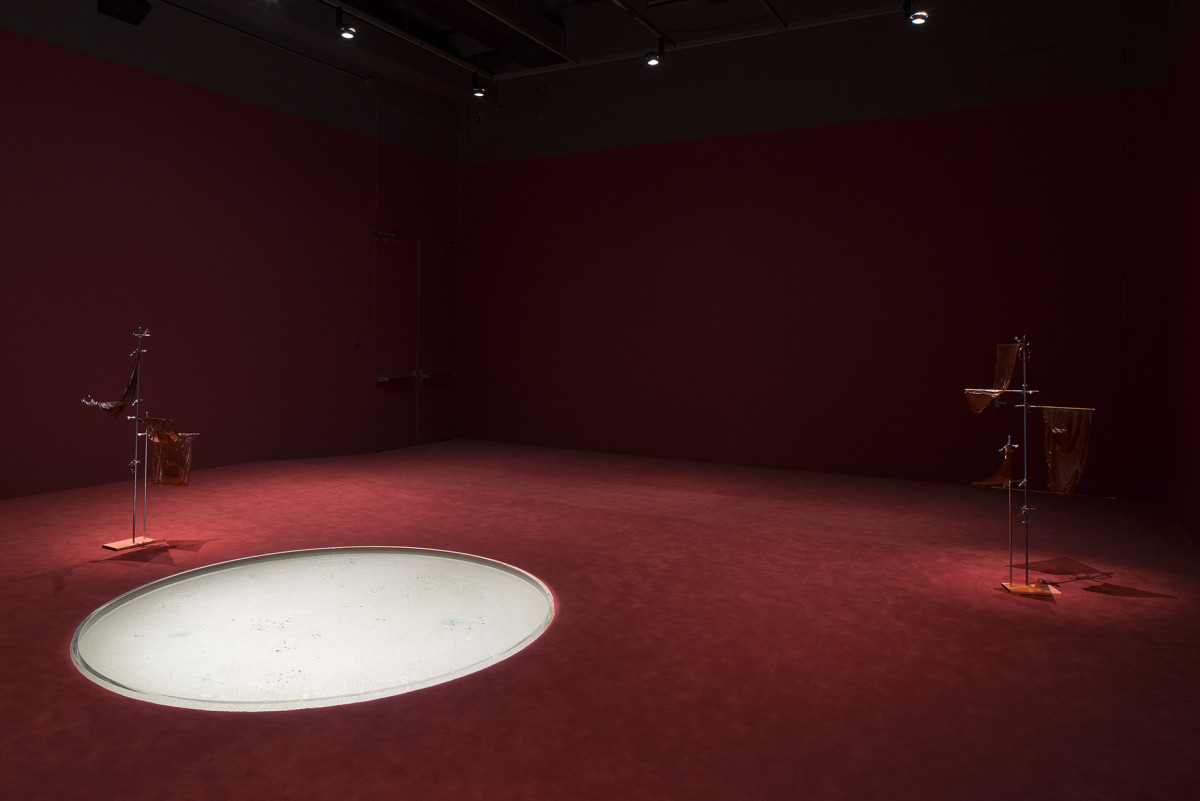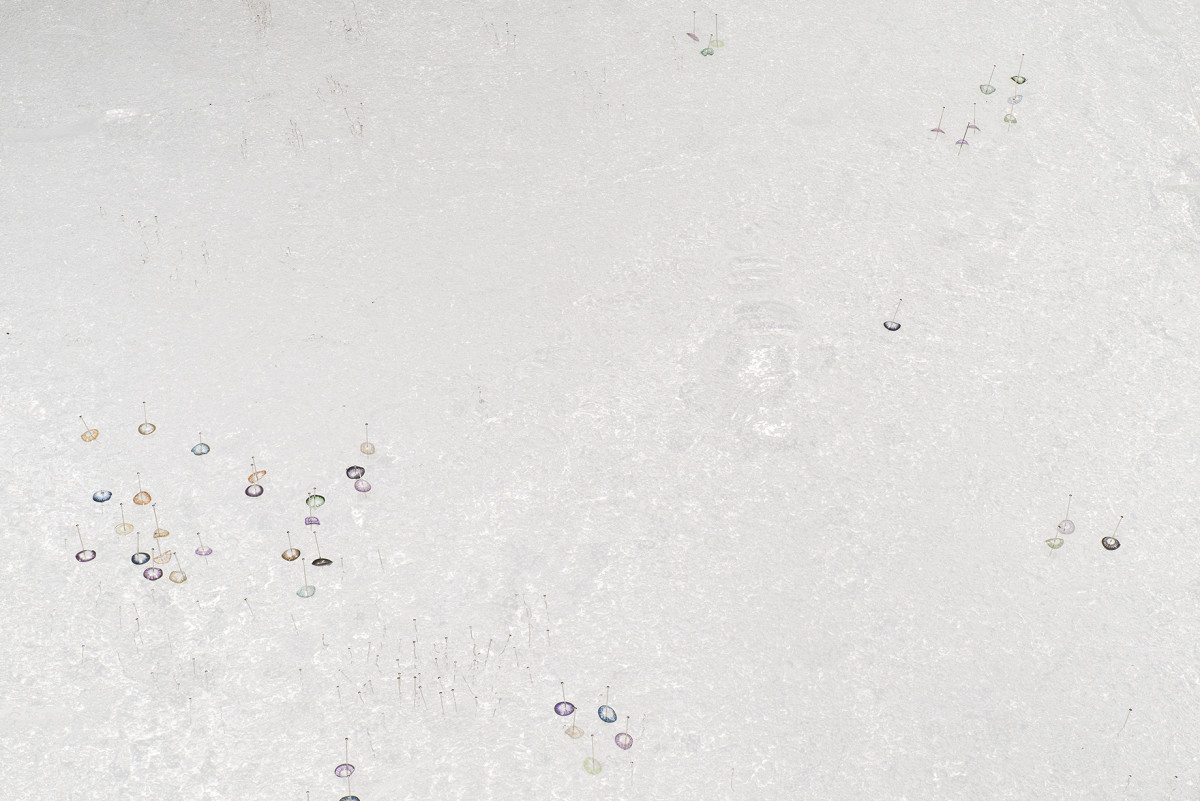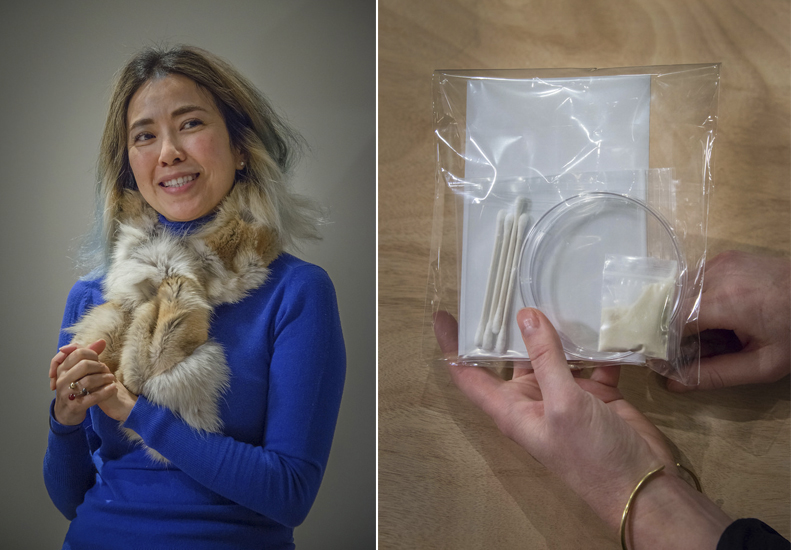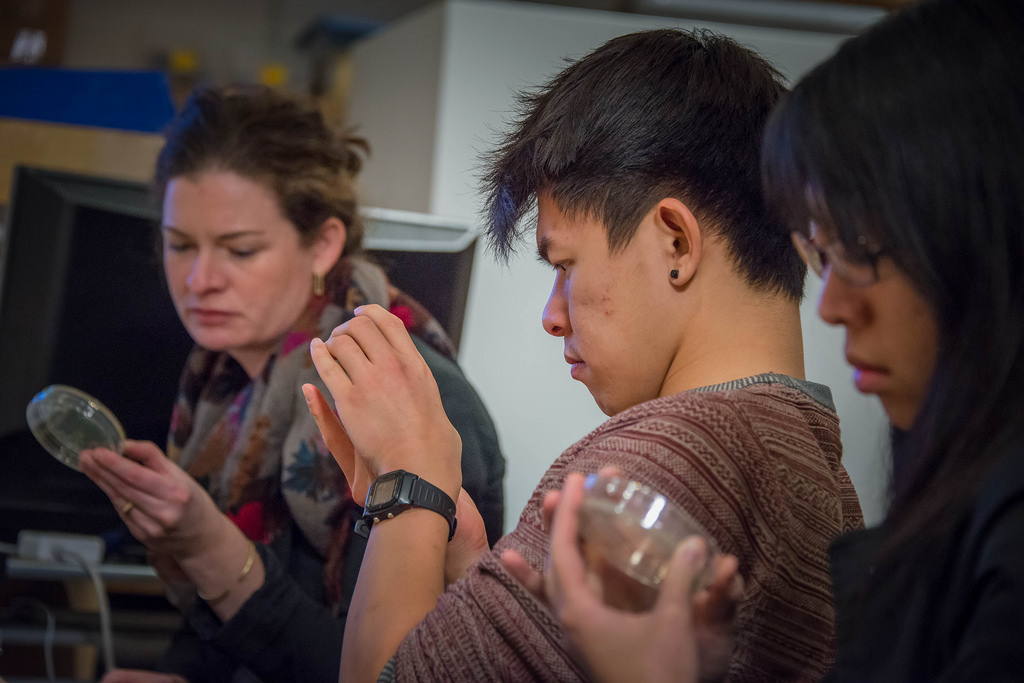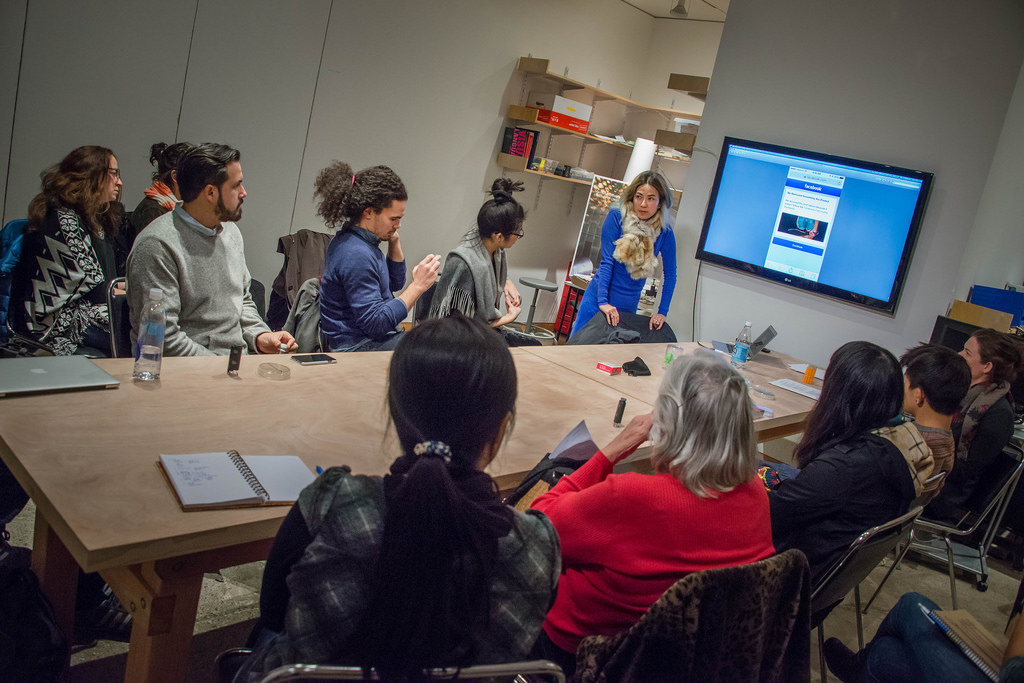“A sense of smell was my portal to a freer world as a child. I prefer to smell someone’s sweater that’s been on the body than to look at a picture of that person,” explains CAST Visiting Artist Anicka Yi. Growing up in a Korean household with pungent food, and a mother and three sisters who shared a keen interest in perfume, Yi began experimenting with scent at a young age. She recalls, “I tried not to be repelled by things I smelled. I tried instead to catalogue them in my brain.”
Her fascination with scent, and her concomitant “anxieties about looking,” figure into her multi-sensory art works. Working with materials as diverse as bacteria, honey and tempura-fried flowers, Yi creates olfactory installations designed to disrupt our predominantly visual culture.
As part of her 2014-15 residency at MIT, Yi co-taught an IAP workshop, “The Art and Science of Bacteria,” with Tal Danino (Postdoctoral Fellow, MIT Laboratory for Multiscale Regenerative Technologies, TED Fellow), in which she and Danino shared their collaborative work and explored ideas related to using bacteria for artistic expression. Yi says her interest in bacteria evolved: “Before I was working on a microscopic level, gathering these cultures; I was aestheticizing bacteria in my soap works, for example. It was an evolution; I was interested in these ideas around metabolisms and stomachs. Bacteria is an extension of my interest in that.”
For a recent exhibition, “You Can Call Me F,” at The Kitchen in New York, Yi worked with Danino to develop strange and pungent works cultured into a “collective bacterium.” Yi and Danino created a scent compiled from biological samples from 100 women to explore ideas related to paranoia surrounding contagion and hygiene, fear of feminism and the power of female networks. “It [this residency at MIT] really opened the gates for me,” says Yi in an interview in ArtSpace, “to have the opportunity to develop relationships with some of the top researchers and scientists. And then the biology started to become more tangible.”
Yi’s work was on view at the List Visual Arts Center (May 22-July 26). This exhibition, “ANICKA YI: 6,070,430K OF DIGITAL SPIT,” featured her ongoing project, The Flavor Genome. Inspired by a dish called Mint Pond, which she ate at the famous 3 Michelin-starred restaurant elBulli, Yi examines how visual, olfactory, gustatory and auditory “flavors” elicit sense memories and longing, and possess cultural and economic value. “I’m so inspired by what’s happening in food in molecular gastronomy. I think the most radical artistic statements are being made in the world of cuisine. That interest translates and seeps into my approach to smell. Even though I don’t work with food, I feel the sensibilities are shared.”
In the List exhibition, Yi filled the gallery with the scent of menthol and created an illuminated pond of synthetic and biological material, such as hair gel embedded with contact lenses, and cellulose “leather” grown from bacterial cultures found in kombucha tea.
Yi also notes that like cuisine, her work is perishable, which bears conceptual significance: “For me as a female artist, it was a way to rebel and protest against this monumental masculine art that was meant to stick around long after humans have come and gone. I just don’t buy that. In a way, it’s counter to that masculine attitude and thinking of permanence and human dominance over nature.”
To hear more about Yi’s thoughts on topics, such as identity politics in a post-Occupy climate, the viability of female networks and sexism, you can listen to her podcast, Lonely Samurai. In this series, she invites fellow artists and other figures from the art world to join her for provocative conversations about social and political issues.

